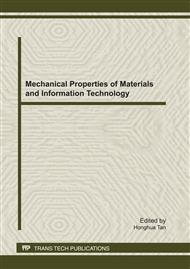p.324
p.331
p.337
p.344
p.351
p.357
p.363
p.369
p.378
Construction of Two Vectors for a Bypass of Monocotyledon Plants Photorespiration
Abstract:
In order to modify the photorespiration of monocotyledonous crops, we aimed to construct vectors that will be used to introduce a bypass to the native photorespiration pathway. Firstly, we cloned the encoding sequences of glyoxylate carboligase (GCL) and tartronic semialdehyde reductase (TSR) from E. coli, glycolate dehydrogenase (GDH) from Arabidopsis thaliana and chloroplast transit peptide (cTP) from rice. Then we constructed a universal vector pEXP harboring the encoding sequence of cTP for targeting a protein into chloroplast. By insertion of these three encoding sequences into the universal vector pEXP, we obtained the expression cassettes for GCL, TSR and GDH, respectively. Finally, we inserted the cassettes for GCL and TSR in tandem into the binary vector pCAMBIA 1301, and for GDH into another binary vector, pPGN, to obtain our plant expression vectors pCAMBIA 1301-TG and pPGN-GDH, respectively. These two expression vectors possess different selection resistance and can be used to transform monocots together, to introduce the bypass pathway of photorespiration. By this way, the transgenic plants can recycle glycolate, the by-product of photosynthesis in C3 plants, within the chloroplast, simultaneously, save energy and avoid the loss of ammonia, which will contribute to improved growth.
Info:
Periodical:
Pages:
351-356
Citation:
Online since:
September 2011
Authors:
Price:
Сopyright:
© 2012 Trans Tech Publications Ltd. All Rights Reserved
Share:
Citation:


